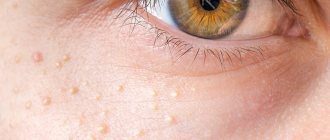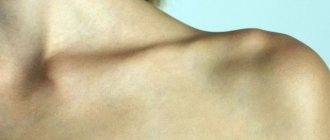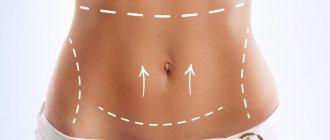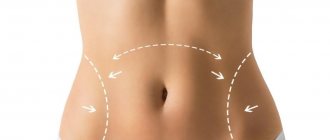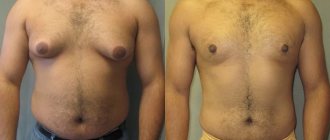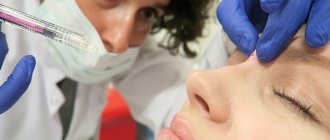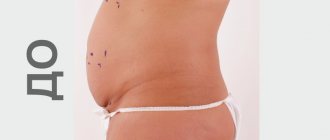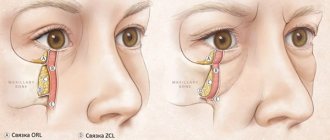Abdominoplasty is one of the most popular plastic surgeries, during which the shape and size of the abdomen is corrected.
Pregnancy and childbirth, sudden weight loss, age, which is responsible for the loss of elasticity of the skin and muscles - under the influence of these and other factors, the appearance of the abdomen becomes unattractive. At the same time, it is not possible to get rid of fat deposits on the abdomen, a hanging “apron” or stretch marks either with the help of diets, or during hardware cosmetic procedures, or by vigorously exercising. The situation can be corrected with abdominoplasty - this intervention accounts for 7% of all plastic surgeries. Abdominoplasty is in demand both among young patients and among older women; men are increasingly turning to the clinic to correct emerging defects. As a result of abdominoplasty it is possible:
- get a flat, beautifully shaped belly and a slender waist;
- eliminate scars and stretch marks on the skin;
- correct the shape of the navel;
- get rid of a hernia;
- strengthen the muscles that hold the internal organs in their natural position.
The list of indications for abdominoplasty is quite extensive; they can be divided into medical, performed in the presence of a defect in the anterior abdominal wall, and aesthetic, the purpose of which is to improve appearance.
Indications:
- loss of skin elasticity, stretching and sagging - the so-called “apron”;
- excess belly fat;
- the presence of stretch marks, scars, cicatrices;
- hernias: umbilical, white line of the abdomen, postoperative;
Contraindications:
- infections and inflammatory processes in acute form;
- pregnancy and lactation;
- some pathologies: diabetes mellitus, malignant tumors, autoimmune diseases, blood diseases, etc.;
- severe pathologies of the heart, kidneys, lungs in the stage of decompensation.
From a technical point of view, abdominoplasty is one of the most difficult, since during the operation the skin, subcutaneous fatty tissue, and muscles are affected, and the surgeon often has to remove a discrepancy in the muscles of the abdominal wall or a hernia. The capabilities of our Center allow us to combine various types of plastic surgery, including complex techniques; we also perform correction of the anterior abdominal wall in cases of extensive fat deposits.
Indications for tummy tuck
The main goal of abdominal abdominoplasty is to remove excess skin, create harmonious body contours, and restore the anterior abdominal wall.
Weight gain, pregnancy and childbirth can cause severe stretching of the skin and muscles. The degree of changes can vary: from small folds to a pronounced skin-fat apron combined with separation of the abdominal muscles.
Indications for abdominoplasty:
- skin-fat “apron”, sagging skin of the abdominal area (as a result of weight loss, age-related changes, pregnancy and childbirth);
- stretching of the abdominal muscles, which can lead to prolapse of internal organs;
- cicatricial stretch marks (striae) in the abdominal area;
- unaesthetic postoperative scars and scars on the abdomen;
- diastasis (separation of abdominal muscles).
Seroma after abdominoplasty: causes of development, treatment, prevention
Surgical tummy tuck is a complex and very traumatic procedure. During the operation, a large amount of skin and excess fat are excised, even the muscular aponeurotic layer is affected. Concomitant pathologies in the patient, surgeon errors, non-compliance with the rules of the recovery period - all this can provoke various adverse consequences.
Seroma after abdominoplasty is an accumulation of lymph between the layers of tissue that were surgically exposed during a tummy tuck. Most often, such formation occurs in the area of the sutured edges of the wound - where the scar subsequently forms. The fluid collects in the cavity between the fat layer and damaged capillaries, and can remain there for weeks or months.
Is this situation considered a complication? What factors lead to its development? What symptoms should you pay attention to, how to distinguish them in time and what should you know about treatment? Are there effective prevention measures? All details and verified medical information are available only on TecRussia.ru:
↑ Causes of occurrence
Correction of the anterior abdominal wall during abdominoplasty is always accompanied by rupture or incision of the lymphatic vessels. Unlike blood vessels, they cannot quickly close with a thrombus, so even after the operation is completed and sutures are applied, exudate continues to be released from them. Taking into account the area and location of the postoperative wound, it is almost impossible to provide complete rest to the injured area - with the slightest movements, and even simply during breathing, tissue displacement can occur, which is why even more fluid is released into them. If its outflow is difficult, the appearance of seroma cannot be avoided. Such an unfavorable development of events can lead to:
| Risk factor | What's the point |
| Excessive trauma | During large-scale interventions, the surgeon must carefully separate intact (healthy) tissues from pathological ones. Rough and aggressive work with the wound surface increases the risk of cavities forming in the scar area, in which exudate will inevitably accumulate. |
| High activity of the immune system | Lymph contains leukocytes, which play an important role in protecting our body from infections and other foreign elements, therefore, with any injury, its increased formation and delivery to the emergency zone occurs. Some patients produce fluid in quantities that exceed normal levels, and therefore are more likely to develop seromas. In addition, problems arise with prolonged inflammation in the area of the surgical incision: the longer the healing takes, the higher the risk of serous stagnation. |
| Disorders of the cardiovascular system | Fluctuations in blood pressure, changes in blood lipid balance, and dysfunction of vasomotor reactions provoke uneven distribution of lymph in the surgical area and poor drainage. |
| High body mass index | Statistically, this is one of the most common causes of seroma. It is believed that if the thickness of subcutaneous fat in the abdominal area exceeds 5 cm, problems cannot be avoided. It is even worse if this condition is associated with diabetes mellitus, since it further impairs blood circulation and lymph flow (abdominoplasty is usually contraindicated for such patients). |
| Elderly age | In people over 70 years of age, due to the general aging of the body, regeneration processes worsen, and wound healing occurs more slowly. Also, as a rule, they have certain problems with the cardiovascular system. This means that the occurrence of lymph stagnation is much more likely than in young patients. |
↑ Symptoms and diagnosis
As a rule, seroma occurs in the first 1-2 weeks after tummy tuck. Its size can range from 10-20 ml to 1-2 liters. Diagnosing a small accumulation of fluid at an early stage is difficult due to the lack of external signs and patient complaints. When 0.5 liters or more of lymph accumulates in the wound, a characteristic clinical picture appears:
- limited swelling in the scar area;
- unpleasant sensations – aching and/or pulling, intensifying when moving to a standing position, moderate pain;
- a feeling of transfusion at the site of localization of the serous formation;
- skin hyperemia;
- increase in body temperature to subfebrile levels (37.0-37.5C);
- general weakness, severe fatigue.
During the examination, the surgeon determines additional signs of pathology:
- an increase in the size of the abdomen (most often in its lower part);
- the presence of a symptom of fluctuation, and in rare cases, a visually detectable flow of fluid when changing body position;
- local hyperthermia.
An ultrasound examination is performed to confirm the diagnosis of seroma. During the procedure, healthy tissues of varying density and a cavity with fluid are clearly visible on the monitor. At this stage, it is extremely important to exclude a much more dangerous pathology - an abscess, for which a puncture is carried out and an assessment of the extracted contents is carried out: the serous fluid is light in consistency, has a light yellow color and does not smell of anything, pus is much denser, with a cloudy greenish tint and a characteristic unpleasant smell.
↑ Prospects and forecast
Quite often, seroma resolves on its own, but this process should not be left to chance, especially in the case of abdominoplasty, during which fairly extensive tissue damage occurs. Possible (and not so rare) complications include:
- Seroma suppuration up to the formation of an abscess: pathogenic microorganisms can enter here both from the outside and from any chronic source of infection in the body (carious tooth, sinuses, tonsils). A closed cavity where the contents of lymphatic vessels accumulate is an excellent environment for the proliferation of pathogenic bacteria.
- The proliferation of a layer of cells that secrete mucous exudate and prevent the fusion of the walls of the serous “pocket”. A similar situation occurs if the cavity formation has existed for a long time (years) and further complicates further treatment.
- Changes in the structure of the abdominal wall, thinning of subcutaneous fat, the formation of excessive amounts of scar tissue - this is not dangerous to health and life, but aesthetically it looks unattractive.
↑ What should be the treatment
Immediately after the completion of tummy tuck, the patient is given a drainage system - tubes with a collection of biological material, through which there is a constant outflow of fluid in the first few days. They are removed when the daily volume of released exudate does not exceed 20-30 ml. It is believed that our body “utilizes” this amount naturally without any problems - normally this happens within 2-3 weeks.
In case of further increase in the size of the seroma, deterioration of the general condition, or the appearance of signs of infection, specific therapy is prescribed. Its goal is to improve the outflow of lymph and minimize the size of the cavity in which it accumulates. This treatment is based on the use of antibacterial drugs, the task of which is to prevent infection, reduce the severity of aseptic inflammation and reduce lymph production. For the same purposes, drugs from the NSAID group are often prescribed, incl. Diprospan and Kenalog.
- Possible complications after abdominoplasty and methods of treating them
- Why does swelling appear after tummy tuck and how long does it last?
In case of ineffectiveness of drug therapy or rapid growth of the cavity, vacuum aspiration of the contents of the seroma is performed. To do this, an incision is made with a scalpel at the site of fluid accumulation, through which the excess is pumped out using a special tube. As a result, patients feel noticeably better, and discomfort in the suture area disappears. However, often one such session is not enough and after temporary relief a relapse follows. It may take several weeks to several months of regular aspiration for the lymphatic vessels to completely close and for the walls of the cavity where the fluid has accumulated to shrink and grow with connective tissue.
↑ Prevention of seroma after abdominoplasty
To avoid the appearance of cavities with serous contents, coordinated work between the patient and the surgeon is necessary. The doctor must:
- Before performing abdominoplasty, assess the risks of complications and, if necessary, provide recommendations for their elimination.
- Carefully handle tissues that are affected during the intervention.
- Close the wound layer by layer. The distance between seams should not exceed 1 cm.
- Prescribe antibiotics to prevent inflammatory reactions.
- Install drains in a timely manner.
The patient, in turn, needs to:
- Before performing a surgical tummy tuck, reduce body weight and, if possible, eliminate other risk factors (normalize blood pressure, treat chronic infections, etc.)
- Wear compression garments according to the schedule specified by the doctor, if this is necessary for rapid wound healing and restoration of ability to work.
- Avoid physical activity and lift heavy objects for 1-2 months.
- Visit the surgeon in a timely manner and inform him of any discomfort or other atypical sensations.
Doctors say that seroma is not a disease or a complication, but only features of the lymphatic system in a particular patient. However, remember: ignoring the symptoms and untimely treatment of this condition can lead to unpleasant consequences, including abscess formation with the need for repeated surgery.
Abdominoplasty after childbirth
Most often, women resort to tummy tuck after pregnancy and childbirth.
During pregnancy, the skin on the abdomen of women often loses its elasticity, which subsequently leads to the formation of not only numerous stretch marks, but also the so-called skin “apron” - overhanging folds of skin on the abdomen.
Abdominoplasty allows you to recreate the natural contours of the body, remove excess skin, eliminate stretch marks, restore the muscle frame, and make the stomach attractive again.
Abdominoplasty techniques
The surgical technique depends on the indications and can be performed in various variations:
Classical
The operation is performed when it is necessary to remove significant amounts of excess skin, correct the waist line and the location of the navel, and eliminate diastasis (muscle separation). This type of plastic surgery allows you to effectively bring your stomach into shape, reducing up to 70 cm of excess tissue. The cosmetic seam is located below the line of wearing underwear and is invisible to others.
Partial
It is considered less traumatic and is performed when it is necessary to tighten the skin in the lower abdomen without transferring the navel. When performing partial abdominoplasty, the seam is also located below the line of wearing underwear and also remains invisible to others.
Endoscopic
This type of abdominoplasty will not help get rid of the skin-fat “apron” and is indicated only if there is a slight weakening of the abdominal tone and separation of the abdominal muscles. Plastic surgery is performed without incisions, the intervention occurs through small punctures (2-3 cm), leaving no traces of the operation.
If necessary, the procedure can be performed in combination with liposuction (removal of local fat deposits).
The choice of the final tummy tuck procedure is determined by the surgeon during a face-to-face consultation.
Expert commentary
A balanced diet and physical activity are not always effective; often a sagging stomach that has lost its contours, loose skin, stretch marks, an unattractive navel shape and other defects can only be corrected with the help of plastic surgery - abdominoplasty. The capabilities of our clinic allow us to achieve impressive results even with extensive fat deposits, severe sagging of the anterior abdominal wall and other abnormalities. In some cases, to achieve maximum effect, it is possible to combine abdominoplasty with other plastic surgery techniques: liposuction, correction of breast shape and size, skin tightening, etc. We can offer any combination of plastic and medical surgery! What exactly do you need? Sign up for a consultation and together we will discuss all possible ways to achieve the ideal option, taking into account the individual characteristics of the body and your wishes.
Plastic surgeon Dmitry Alexandrovich Zimin
Plastic surgery on the abdomen
The course of the operation itself can be divided into the following stages:
Preparation for abdominoplasty
Includes a mandatory medical examination (blood, urine and sugar tests and consultation with an anesthesiologist), which the patient can undergo at the EMC clinic.
Among the surgeon's mandatory recommendations is limiting solid and heavy foods 1-3 days before surgery. You should not take medications containing aspirin 10 days before surgery. On the eve of the operation, you should take a bath in the evening.
It is necessary to quit smoking 10 days before surgery and refrain from smoking for 3-4 weeks after it.
Visit to the clinic on the day of surgery and the operation itself
The absence of infectious and colds at the time of the operation is mandatory. The operation is performed on an empty stomach (use no more than ½ glass of water to clean your teeth and mouth). The operation can last up to 5 hours, depending on the complexity of the case.
After tummy tuck, the patient is put on a special bandage, which will be worn until the end of the rehabilitation period (from 4-6 weeks to 2-3 months according to indications).
Hospital stay
The patient is in a semi-sitting position in bed; bed rest is recommended on the first day; you can get up the next day after abdominoplasty.
The EMC hospital offers single and double rooms equipped with everything necessary for patients. Meals during your stay in the EMC hospital take into account your personal eating preferences, but must be agreed upon with your doctor.
Medical staff works around the clock, the opportunity to visit loved ones is provided without time restrictions 24/7.
Rehabilitation period at home
After discharge from the hospital, the patient goes home. In the first days, you may feel unwell and have a slight increase in body temperature. According to indications, the doctor also prescribes painkillers.
The patient is under the closest supervision of an EMC doctor for a month, who promptly responds to any questions and ailments of the patient. The doctor removes the sutures 10-12 days after the plastic surgery, monitors the condition of the suture, and gives detailed recommendations on the regimen and necessary rehabilitation measures.
In the first 2-3 weeks, the patient may be bothered by general weakness, swelling of the tissues, pain when moving, which gradually passes and disappears completely 2-3 months after the operation. In the area of the sutures, some change in sensitivity is observed for a long time. In this regard, during the rehabilitation period you should not use a heating pad with hot water, take a hot shower or bath. It is recommended to avoid direct sunlight and tanning.
Advantages of treatment at the Swiss University Hospital
- Our Center for Reconstructive and Plastic Surgery employs highly qualified specialists with many years of experience; if necessary, it is possible to obtain consultations with doctors of other specializations: endocrinologist, cardiologist, urologist, etc. - we receive leading specialists in 15 areas.
- The clinic has the opportunity to undergo all the necessary examinations, the presence of its own laboratory, and modern diagnostic equipment allow us to carry out diagnostics as accurately as possible and in the shortest possible time.
- We carry out simultaneous operations, even in the presence of 5-6 diseases (presence of stones, tumors, goiter, etc.) that require surgical treatment - one surgical intervention. One anesthesia, one preoperative examination and a couple of weeks for recovery, which means minimal stress on the patient’s body, saving his time and money.
- We have our own intensive care unit, equipped with modern, highly sensitive, expert-class equipment, and intensive care wards equipped with high-quality equipment. The condition of patients after surgery is monitored around the clock.
- For the convenience of hospitalized patients, an individual post for medical personnel is possible.
- Comfortable single or double rooms are equipped with everything necessary for a comfortable hospital stay.
Abdominoplasty at EMC
Reconstruction of the anterior abdominal wall is one of the most complex operations in plastic surgery and requires high professionalism of the doctor. EMC surgeons understand how important the aesthetic component of the operation is, so they always try to limit themselves to minimal tissue trauma.
In addition, EMC has developed its own system for the aesthetic management of patients after abdominoplasty, which includes:
- three-level lymphatic drainage using the TriActivePlus device,
- ozone therapy,
- lipolytic mesotherapy,
- Thermage
Aesthetic correction techniques allow not only to speed up the patient’s rehabilitation, but also to achieve the best aesthetic result of the operation.
Unpleasant sensations, such as swelling, bruising and partial numbness in the lower abdomen, are inevitable, but will pass after some time. As with any aesthetic correction, it is extremely important to establish a trusting relationship with the surgeon and fully follow his recommendations throughout the entire rehabilitation period.
FAQ
What tests need to be done before abdominoplasty?
Before the operation, you need to pass a list of tests prescribed by the doctor, including a general blood test with a leukocyte formula, a general urinalysis, an electrocardiogram (ECG) and a chest x-ray.
How long does swelling last after abdominoplasty?
Swelling after tummy tuck lasts about a month on average.
How long to wear a bandage after abdominoplasty?
You will need to wear compression garments for a month after surgery. The doctor will give individual recommendations on further wearing of the bandage during personal post-operative consultations.
How long after abdominoplasty can I give birth?
Patients who have undergone abdominoplasty can become pregnant no earlier than one year after the operation.
WHAT INCREASES SWELLING AFTER OPERATIONS
Unfortunately, we are often ourselves to blame for increased swelling after surgery.
In order for the rehabilitation period to pass without complications, you must follow simple rules:
- exclude physical activity (hard work, training);
- stop visiting bathhouses and taking hot baths;
- sleep with the head of the bed elevated (or on a high pillow) after facial surgery;
- undergo a rehabilitation course after surgery;
- It is mandatory to wear compression garments after body surgery;
- strictly follow all recommendations of your plastic surgeon;
- do not eat salty, spicy, sweet foods;
- examinations with a plastic surgeon are required on day 1, day 7, 3 weeks, 4 weeks, 2 months, 3 months.
Failure to follow the recommendations of a plastic surgeon, at best, can lead to increased swelling after surgery, at worst, an inflammatory process may begin or a complication may arise. In any case, if you notice that the swelling is growing rapidly and this is not provided for by the peculiarities of the recovery period, you should immediately contact the surgeon with whom you operated.
FEEDBACK AFTER THE OPERATION
“After the “facial lipofilling” operation, the immediate appearance was not very good; there was swelling at the intervention sites, but the doctor warned that this was normal and that it would all go away. The general state of health was quite normal. Letting me go home, plastic surgeon Sarukhanov G.M. explained in detail how the recovery period would proceed and how to behave and what to do. I was recommended rehabilitation procedures, I doubted it at first, but on the second day (as the doctor predicted) the swelling intensified, I began to worry and came for rehabilitation procedures. After the first one, I felt better, I realized that the decision was the right one, and I regretted that I didn’t agree right away.” Svetlana, 46 years old and other reviews about how to get rid of swelling after surgery.
